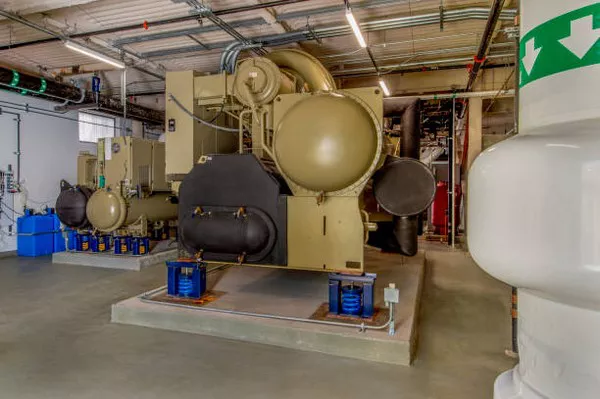In today’s modern world, a continuous and reliable supply of electricity is essential for powering various aspects of our lives. However, disruptions in the power grid can occur due to natural disasters, maintenance, or other unforeseen events. This is where electrical automatic generators come into play. These ingenious devices serve as a backup power source, ensuring uninterrupted electricity supply during times of grid instability. This article aims to delve into the inner workings of electrical automatic generators, shedding light on their components, operation, and significance.
Basic Components of an Electrical Automatic Generator
An electrical automatic generator is a complex system composed of several key components that work together to provide a stable supply of electricity. The fundamental components include:
Engine: At the heart of the generator is an internal combustion engine, often fueled by diesel, natural gas, or propane. This engine is responsible for converting chemical energy in fuel into mechanical energy.
Alternator: Also known as a generator head, the alternator converts the mechanical energy produced by the engine into electrical energy. It comprises a rotor and a stator, where the rotor’s rotation induces a magnetic field in the stator, resulting in the generation of alternating current (AC) electricity.
Voltage Regulator: To maintain a stable output voltage, the generator employs a voltage regulator. This device adjusts the electrical output to ensure it remains within a predefined range, preventing potential damage to connected devices.
Control Panel: The control panel is the nerve center of the generator. It houses various controls and indicators, allowing users to monitor and control the generator’s operation. These controls include start/stop buttons, voltage and frequency adjustments, and system status displays.
Fuel System: The fuel system, including tanks, lines, and filters, ensures a continuous supply of fuel to the engine. Fuel is a critical component, as it directly impacts the generator’s runtime and efficiency.
Cooling System: Generators generate heat during operation, and a cooling system—usually consisting of fans, radiators, and cooling fluids—prevents overheating, ensuring the longevity and reliable performance of the engine.
Exhaust System: The exhaust system expels combustion byproducts, such as gases and heat, safely away from the generator unit. It often includes mufflers and exhaust pipes to minimize noise and emissions.
Automatic Operation Mechanism
The defining feature of an electrical automatic generator is its ability to sense power disruptions and activate automatically to restore power without human intervention. This mechanism involves the following steps:
Sensing the Power Loss: The generator’s control panel is equipped with sensors that detect any interruption in the grid power supply. As soon as a power loss is detected, the generator is signaled to start.
Starting the Engine: Upon receiving the signal, the engine’s starter motor engages, initiating the engine’s ignition process. Fuel is injected into the engine’s combustion chambers, and the engine begins to turn over.
Generating Power: As the engine starts to run, it drives the alternator, which in turn generates electrical energy. The voltage regulator ensures that the generated voltage remains stable within the desired range.
Monitoring Power Restoration: Once the grid power is restored, the generator’s sensors detect the change and signal the engine to shut down. However, many generators incorporate a cooldown period during which the engine continues to run for a short duration to prevent damage caused by abrupt temperature changes.
Significance and Applications
Electrical automatic generators play a crucial role in various settings, offering a reliable source of backup power. Their significance is evident in numerous applications:
Residential Use: In homes, automatic generators provide peace of mind during power outages, enabling uninterrupted operation of essential appliances like refrigerators, lights, and medical equipment.
Commercial and Industrial Use: Businesses and industries rely heavily on continuous power for production, data centers, communication systems, and more. Automatic generators ensure that operations continue seamlessly even in the face of power disruptions.
Emergency Services: Hospitals, fire stations, and emergency response centers require uninterrupted power to save lives and provide critical services. Automatic generators ensure that these facilities remain operational during emergencies.
Remote Locations: Construction sites, remote research stations, and off-grid installations often lack access to stable power. Automatic generators serve as reliable power sources in these locations.
Maintenance and Care
To ensure the longevity and optimal performance of electrical automatic generators, regular maintenance is essential. Key maintenance tasks include:
Regular Inspections: Regular visual inspections of the generator’s components, fuel system, and exhaust system help identify any signs of wear, leaks, or damage.
Fluid Checks: Monitoring and replenishing coolant and lubricants are vital to prevent overheating and maintain proper engine function.
Load Testing: Periodically subjecting the generator to load tests simulates real-world conditions and ensures it can handle the required electrical load during emergencies.
Fuel Quality: Regularly checking and treating fuel prevents contamination and degradation, which can impact the engine’s performance.
Conclusion
Electrical automatic generators are ingenious devices that provide a reliable backup power source during grid disruptions. Through their intricate interplay of components and automatic operation mechanism, these generators offer a seamless transition from grid power to backup power, ensuring uninterrupted electricity supply in various critical applications. Understanding the inner workings of these generators highlights their significance in modern society and emphasizes the importance of proper maintenance for their longevity and reliable performance.

